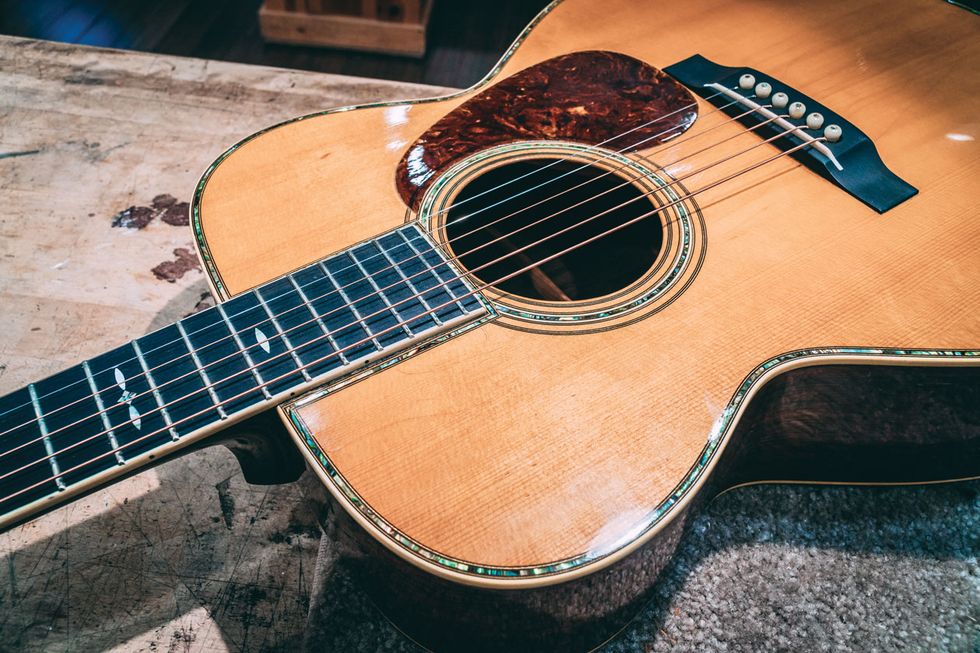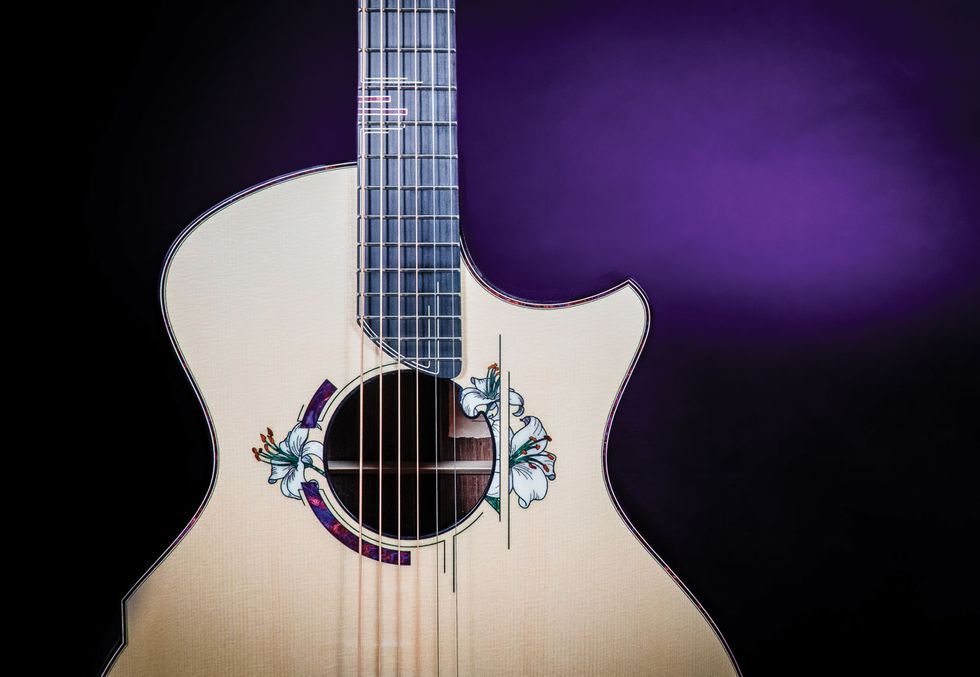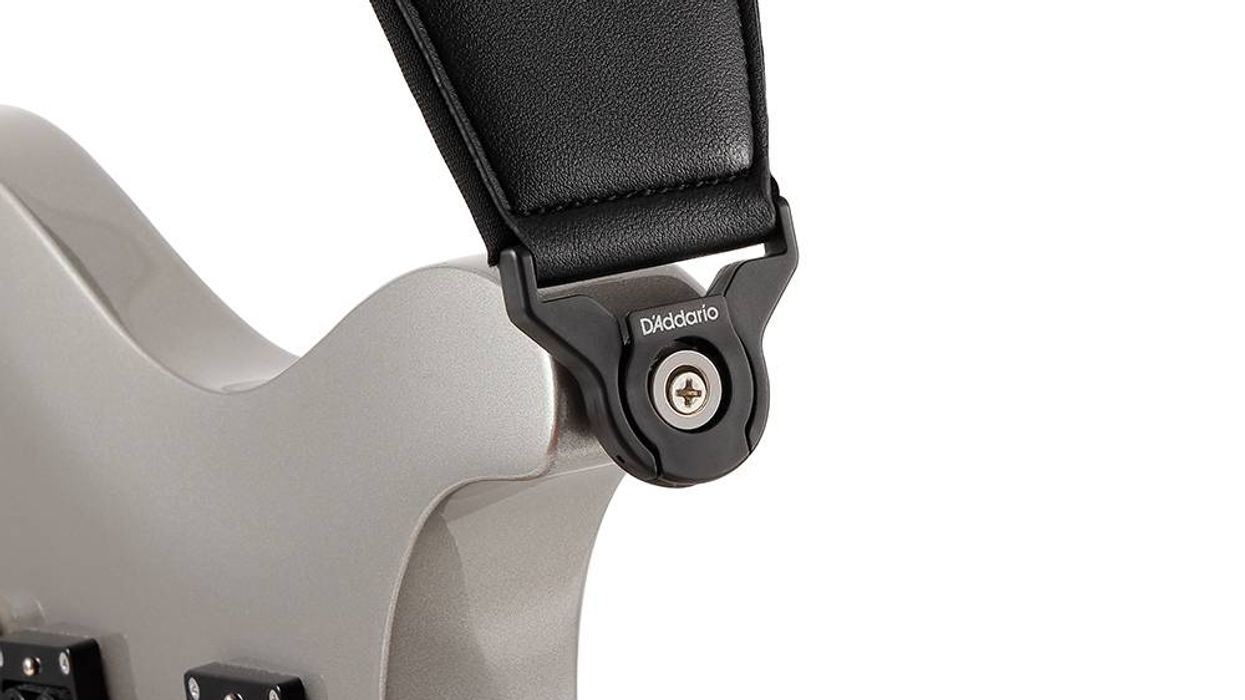In my September column, “Scale length and String Tension,” I referenced my 1938 000-42 (Photo 1) as an example of a shorter, 24.9"-scale Martin. I recently pulled it out of the vault, put on new strings, and started playing it again. And while looking at the pearl detail and other appointments, I was reminded of how I felt back in the ’70s when I first saw these pearl-embellished instruments from 1930 to 1940. The magic of seeing a blinged-out instrument for the first time really stuck with me. Just recently, while hanging out with George Gruhn at his shop in Nashville, I picked up a 1942 000-45, which re-instilled the feeling of awe in me for the art of guitar making.
The art of guitar making is something that has captured the imagination of both luthiers and players for centuries. Luthiers were conservative in the early days, so embellishments were limited. Originators of the acoustic guitar, such as Torres and Ramírez, followed tradition by focusing on instrument making, but limited artistic elements to simple rosettes, purflings, or proprietary peg-head designs. It’s interesting that more modern instruments from the 1950s and 1960s—such as Martins, Fenders, and Gibsons—were often straightforward, clean, players’ models. Check the history books and you’ll see that even the great musicians gravitated toward basic guitars that would simply get the job done.
Over time, embellishments broadened production that pushed the boundaries of art and instrument making. Shell inlay on guitars like Martin’s 42 and 45 models was obviously popular. Then there is Gibson’s beautiful cremona-brown sunburst that became so common among country music stars. The thing to note with these examples, however, is that they were all great musical instruments first, and any appointments were in addition to their musicality.
Somewhere along the line, the perception of musical instruments changed. It was likely due in part to the advent of television exposing the public to Gene Autry’s decked-out Martin and Hank Williams’ sunburst J-45. The buying public’s perception shifted, and they started paying more attention to the persona that accompanies making music, rather than the music making itself. When a customer pays more attention to the look of the wood and appointments than what an instrument sounds like, the scales tip and the instruments then have the potential to become less and less musical.
This is not to say that embellishments don’t have their place. There certainly are makers who have achieved a balance of musicality and art. One of my personal heroes is luthier Grit Laskin, who has seamlessly bridged art and music by making instruments that are truly inspiring. Tyler Robbins of Robbins Acoustics is also pushing the boundaries of art, music, and technology by producing some of today’s most exciting embellishments (Photo 2). The prime thing to note about makers like these two, however, is that they had their instrument-making chops down long before worrying about adding any embellishments to their guitars.
Then there are the inlays specialists such as Aulson Inlay. While they may not be luthiers, they have contributed greatly to the advancement of art and lutherie. As a gun for hire, the company is frequently commissioned to design artistic inlay projects to be incorporated into a luthier’s current build. For inlay artists such as Aulson, their focus is only the inlay: It’s entirely up to the luthier to tie it together with the instrument.
Photo 2
There are a handful of innovations in the appointments category that have now become commonplace, such as cutaways and armrests. Cutaways essentially evolved out of necessity, and the armrest is a comfortable option that customers like for several reasons. These extras need not be a concern, but past that, things start to get sketchy. As a musical-instrument builder, I, too, delved into the options and appointments category, but soon realized that getting back to my roots and delivering a world-class, concert-level instrument is what needed my attention.
In the end, whenever you’re looking to buy an acoustic instrument, remind yourself that it has to be a musical instrument first. Musical instruments will continue to evolve, and luthiers will continue to push the boundaries, but the fact is—in its purest form—the guitar’s original design has performed as intended for centuries. It’s the core instrument that lives closest to the truth, and the prime objective should always be tone, response, and reliability—not glitz.
Keep this in mind and never let the musicality of the instrument take a back seat to the embellishments. It will greatly increase the chances for a lifetime of bliss with your new guitar, while decreasing the probability of finding yourself in the dreaded position of having buyer’s remorse.

















